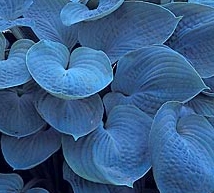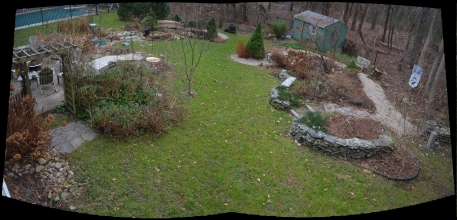Posts Tagged ‘Reflection’
My Cat, She Has No Weekend Plans
My cat, she has no weekend plans Each day begins as new It starts whenever she awakes It ends when she is through
She rises when she hears my sounds She has but one suggestion Feed me now, she cries aloud Supply me my ingestion
Incessantly she pleads her case As if it needed pleading The same refrain throughout the day "I think it's time for feeding"
She's never grateful or annoyed A flare up quickly settles She holds no grudge or looks that judge She bothers not to meddle
The opportunity to be A cat within the rat race Would make her yawn, she'd just as soon Scratch the nearest scratch place
My cat, she has no Facebook page She hangs with who's around her She naps or not or wakes or walks Wherever she has found her
I make my plans for future days She only makes a meow Insisting in this moment That I feed her and be here now
Marion
Garden Mind
I got the White Flower Farm Spring 2012 catalog this week. It’s a page turner as usual, with saturated floral images of garden gems in perfect flower – where the reds are redder, the greens greener and the true blues truer than life. One day, there might be a garden catalog with wilted, spent flowers going to seed. Unlikely.
My garden overwinters – stark and dreary, especially without frost or snow cover. I hope it gets cold enough to kill the bad bugs; I hope there is enough snow cover, eventually, to supplement the good stuff (my brother told me snow is the poor man’s fertilizer). But, I digress. What is really at work is stillness. No growth, just the remnants of the garden being earth bound — skeletal, essential, and creating reserves for the proper blooming time.
What I have is garden mind.
Our garden (aka, “R” Garden) sits, while last year’s beauty decomposes into next year’s growth. I see the garden’s shape from our upstairs window – the straight and curvy lines, the beds, the flow from one section to another joined by lawn, paths, steps, and bridges. I like this flow and work to refine it in my mind: firm up that edge with a low border, trim that shrub to be a better neighbor, hack that pachysandra, reset those stones, et cetera. In a process of refinement, endless tweaking shapes the garden and morphs its profile. Its essential personality, established long ago, matures incrementally, bringing charm, whimsy and nature into harmony improved by age.
Of course it’s a living thing and changes occur, apparently spontaneously, as well. Like the clumping bamboo that finally, finally decided to become the screen I imagined ten years ago. Who knew it would take this long? I suppose that’s where annuals come in. They provide the instant gratification that delights the eye and other senses. Not much mystery but adornment galore and great expectations easily met. We enjoy the splash, the visual spice, and the abundance of blooms overlaying the perennial foundation.
The garden mind dwells on ideas and suffers no toil. No: weeding, spraying, mowing, aching backs or biting no-see-ums. It sees golden possibilities; it harbors hopes and plans — flights of fancy that could occupy the whole of next season. It’s a great place to visit.
What Is Your Garden Worth?
Away from my garden, retreating in Martha’s Vineyard, MA, I came upon this thought.
A gardener uses all his senses — sight, smell, sound, touch, taste — and works within all dimensions — length, width, height/depth, density, time. Not to mention energy and soul. These variables intersect (interact) in observable and intangible ways to impose order on chaos, form on nature, compromise over competition, justice over power, knowledge over ignorance, passion over apathy, enrichment over paucity, artfulness over randomness, delight over despondency. Both solace and community draw gardeners to others’ gardens and welcome visitors to their own. Commoners and commodores exchange successes and failures; all are equal in the garden.
Gardening and the Economy
So what of “agriculture”? It is not a topic for aesthetic gardeners but for economists. It extracts value from the earth akin to mining, drilling, fishing and forestry. We mortgage our fields against their calculated yield. Gardening, on the other hand, has no measurable value. Agronomy supports our priceless folly.
Shall we leave the economy behind? The ideal of self-sufficiency promises an escape from market tyranny but we are so dependent on our interconnected systems that only delusions or extreme dedication — emphasis on cult-like extremism — could possibly break the grip we’re in. At best, we can disengage at the margins. Very few can afford the luxury of being truly “off the grid.” This is not pessimism but realism. Face it: we want the things we want. The real challenge is properly accounting for them. The market lobs unwanted costs into the future for some other accountant to deal with.
Cost/Benefit Accounting
Recognizing true costs is a starting point. Now, let’s measure value. One way economists measure it is by the cost/benefit ratio (smaller numerator or larger denominator is better). The cost/benefit of agriculture is labor plus materials over market value of the harvest. That leads us to calculate the cost/benefit for gardening as the labor and materials divided by an unfathomable benefit — for there is no market value of a garden, especially where there is no harvest. Now the problem is conventional economics.
This is not a unique dilemma. For example, we have no market value for life itself and we cringe when actuaries propose one. We have no market value either for dancing, blowing bubbles, reading to a child, laughing or mourning.
Toward a New Equation
Assuming there are two roles engaged in the valuation: gardener and observer; we can determine the value of a garden, and gardening, thus.
Assign values to these inputs:
- cost1: the materials the gardener purchases
- cost2: labor the gardener purchases and/or begrudges (annoyance costs)
- benefit1: how much it makes observer want to be in it, in Attraction Units (Au)
- benefit2: how much it makes gardener want to do it, in Au
You might assume the value is higher for the observer/visitor because his is all Attraction Units and no costs (other than opportunity costs). Forget this math — the value of benefit2 can far exceed total costs and the gardener is also an observer of her own garden (benefit1). So, the most valuable context is being both an observer and a gardener and the proper math is: (cost1 + cost2) – (benefit1 + benefit2 )/(benefit1 + benefit2). This can be reduced to cost per Au, which in the ideal, approaches zero. Or something like that… (Deej: how do I keep the numerator from going negative?)
I could muddy the waters with daffodils (tulips, roses, peas, etc.) grown for sale. Back to the cash crop equation. And what of an arboretum vs. a nursery. How much is a 300 year old conifer worth — the value of its lumber? Some things the market cannot know. We must choose how we value things.
I am sitting in the sunny front room of our retreat house. The circling shadow of a bird in flight crosses the table in front of me. My garden grows without me.








